7 Jennifer Knowles
By Emily Rawlings & Danielle Hitch
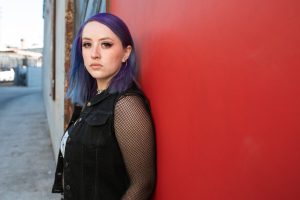
Jennifer (Jen to her friends) is a 26-year old Anglo-Australian woman who recently moved to Geelong from inner city Melbourne to attend university. She is a keen fan of alternative music and considers herself a quirky, artistic, and creative person. Jen also enjoys fashion and particularly loves the work of Vivienne Westwood. Her friends describe her as a strong and independent woman who is open to new experiences and willingly jumps at every opportunity that comes her way.
Home Life
Jen and her older brother (Sam) grew up with their father (Robert) in an expansive inner city terrace house. Her mother (Vanessa) left their home when Jen was five and remarried a new partner. Vanessa lives in Melbourne with her three younger children, but Jen has a limited relationship with her mum and rarely sees her half-siblings. In contrast, she has a close and warm relationship with her father and brother and gets along well with her sister-in-law (Kelsey). Sam and Kelsey have five-year old twins (Stella and Augie) and a three-year old daughter (Neve), who Jen often babysits. She often catches the train up to Melbourne to be with her family, and they visit her at least once a month.
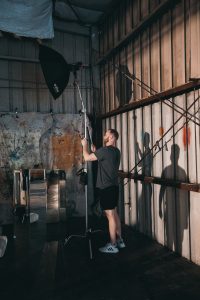
Jen has been in a new relationship for the past two years with Johan (known as Jo), who she met at an art exhibition. He is ten years older than Jen and immigrated to Australia as a young child from South Africa. Jo works as a lighting technician and spends his days completing hard physical work. As a result, he has acquired chronic lower back pain, sometimes preventing him from working. Jo has also experienced bouts of depression since his teenage years, for which he takes anti-depressants. They enjoy a close and loving relationship and have spoken of the possibility of getting married in the future. Jen and Jo share ownership of a one-year old Maltese terrier called Miro.
“We nerd out about music, comics, and art – we just get each other”.
Jen works two casual jobs to support herself and Jo while studying. She works casual shifts at the local hospital as a food services assistant, helping to prepare and deliver patients’ meals. This job fits in around her university lectures and seminars, and she chooses work over university whenever provided the option to watch lectures or seminar recordings in lieu of attendance. Jen also works casually in hospitality as a waitress at a local convention centre, which gives her shifts most Friday and Saturday nights.
“I’d rather be at uni because I love it, but I’ve got rent to pay”
Community

Jen and Ben moved to Geelong one year ago after she was accepted into the Bachelor of Design course. They enjoy the slower pace of the city, easy access to the beach and its vibrant arts and cultural scene. They live in an outer suburb and have all the essential amenities (like a supermarket, chemist, and medical centre) within walking distance of their townhouse. There are also numerous green spaces along the river in the local area, where Jen likes to walk Miro and jog two to three days per week. She also attends local markets but doesn’t know her way around the broader city very well. Jen also finds it difficult to interact with new people, as she tends to be shy with those she doesn’t know well.
However, Jen and Ben have struggled to build a relationship within their new community, as their arrival coincided with pandemic public health restrictions. They are acquainted with one neighbour, as Jen has spoken to her several times as their dogs were socializing with each other. Jen has some workmates she keeps in contact with but does not know them particularly well. Ben has never had a wide social network, as his job rarely sees him working with the same group of people for any length of time. Their financial position also constrains their ability to participate in community activities, as both are on relatively low incomes.
“It’s peaceful down here, but it doesn’t feel like home yet.”
Health
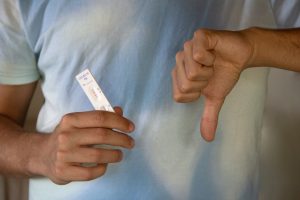
Jen doesn’t have any pre-existing illnesses or disabilities. She had dental surgery at 16 to manage painful wisdom teeth but has required no other procedures and is not on any medication currently. Jen and Jo are vegetarians and try to cook from fresh ingredients wherever possible. She does not have a regular general practitioner (GP) and sees whoever is available on the rare occasions she visits the local medical centre.
COVID-19
Acute Infection
Jen contracted COVID-19 at the end of June 2022 and believes this was acquired at her hospital job. She had been doing extended hours and additional days due to workforce shortages and wonders if her general sense of being ‘run down’ at the time made her more susceptible. It had also been ten months since her last vaccination dose, and she was trying to make time for her next booster when she became infected.
Jen began to feel increasingly unwell the day after she tested positive on a Rapid Antigen Test (RAT) offered at the hospital after a ward outbreak. She and Jo agreed that he should stay with friends in Melbourne to minimize his chances of getting sick and missing out on work. Jen informed her university lecturers that she would not be attending on-site for at least seven days, and they reassured her that she could keep up with her work remotely.
“I didn’t want to be alone, but I thought that was the right thing to do.”
Along with a sore throat, cough and runny nose, she felt profoundly fatigued and slept for most of the following three days. When awake, she felt so drowsy that she would forget what she was doing when moving around the house and could not concentrate on the simplest tasks for longer than one or two minutes. Jen also experienced gastrointestinal symptoms, including nausea, cramping and diarrhea on most days. Embarrassingly, she also began to experience urinary incontinence, particularly when experiencing coughing fits.
From day six onwards, Jen started to feel more energized but still experienced persistent lethargy and post-exertional malaise. She wasn’t eating much or completing self-care tasks because it felt like too much effort. Her cough improved slightly, but it still troubled her overnight (disturbing her sleep) and after any form of physical activity. Jen lost five kilograms over the first two weeks of her COVID-19 infection.
As time wore on, Jen started to feel her energy levels lift, but they were still far lower than normal. While she had been very aware of her physical fatigue initially, she now became increasingly aware of the effect of fatigue on her attention and thinking as the demands on her increased. Jen likened it to ‘a hangover that just doesn’t quit’ and felt frustrated by how long simple tasks took her. Her sore throat and running nose completely resolved after a week; however, her cough stubbornly held on. While she was now able to return to work and university, Jen felt very self-conscious about coughing but was unable to suppress it. Jen also continued to experience gastrointestinal upsets (although less frequently) and urinary incontinence daily.
“Now I get what they mean by ‘brain fog’. I just can’t keep my mind on anything.”
Developing Long COVID
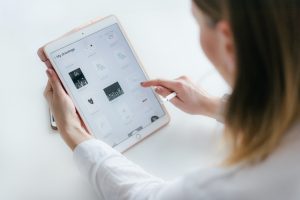
After a month of ongoing symptoms, Jen realized she wasn’t recovering from COVID-19 as quickly and easily as her friends. She saw the same GP on three consecutive visits and asked for help to relieve her cough and feel less fatigued. However, Jen was left feeling that the doctor didn’t take her symptoms seriously, and by the third visit, she could see he thought she was a nuisance. She felt that she needed to justify her requests for tests or treatment and came to that appointment with some information from the internet about cough remedies to seek his advice. He laughed and said, “If you think Dr Google knows more than I do then why are you here?”. The GP then suggested she download a mindfulness app and consider visiting student services at the university to get mental health help. Jen felt discouraged and helpless, as there seemed to be no support or services available to help.
While she had returned to her work and university course, Jen was struggling to keep up with all her duties. She tried to manage her fatigue by avoiding social or leisure activities to focus only on what she ‘had’ to do. Jen also started to avoid activities in the community, as she was very scared of not getting to the toilet in time. She often napped to recharge in between activities but struggled to get any restful sleep. Jen reduced her shifts at the convention centre because that job involved long periods of standing and carrying items. However, her boss told her, “We can’t hold a place for you if you aren’t reliably available”, and shift offers soon dried up. This was the higher paid of her two jobs, and the loss of this work had a big impact on her finances. Jen continued to work at the hospital and took extra shifts there when she could. Her boss and co-workers were more understanding; they knew colleagues who had also had a long road to recovery after COVID-19 infection.
Jen was also increasingly struggling with the demands of her university course. Her marks deteriorated, and she particularly struggled with group assignments that required negotiation with other students. While she still loved her course, being with everyone on campus reminded her how much she missed out. Jen tried to keep up with weekly coursework but found reading materials online more difficult than in hard copy. However, she couldn’t afford to print everything out and continued struggling. Coincidentally, Jo was experiencing an episode of depression, and while they were spending more time than ever together, they went entire days without really speaking with each other.
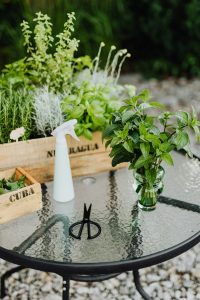
“I can only do one thing at a time. I read the same paragraph over and over again”.
Jen tried again to get support from a different GP and asked whether she might have Long COVID. The doctor told her that she didn’t really know much about the condition, and it wasn’t clear whether it was a real condition or just the stress everyone had been under during the pandemic. Jen had heard of the Royal Melbourne ReCov Program and asked if the GP would refer her there. However, the doctor dissuaded her, saying, “Their waiting list is massive, and honestly, that clinic is for people with far worse symptoms than you”. No other services or support were mentioned or offered, so Jen gave up on getting help from mainstream medicine and began to look at alternatives. She still experienced daily bloating, cramping and flatulence and self-diagnosed herself with irritable bowel syndrome. Jen has tried some dietary changes and natural remedies (such as peppermint from her garden), but neither made much difference. After her initial weight loss during the acute phase of her COVID-19 infection, she has now gained approximately ten kilograms from her original weight and feels increasingly uncomfortable in her body.
Jo tries to be helpful, but the amount of support he can offer depends on the state of his own health problems. Her father visited her recently and was shocked at how unwell she looked. He has been looking for treatment options in Melbourne but is coming up against similar barriers to knowledge and access. However, Sam has been visiting Geelong regularly to help her and Jo with household tasks. She has become closer to Kelsey during regular supporting phone conversations with them. While part of her is relieved she has not been asked to look after her nieces and nephew recently, Jen is aware this makes things difficult for her brother and sister-in-law and feels very guilty about letting them down.
“I can’t wait to be Auntie Jen Jen again, but I’m not ‘with it’ enough now to care for them properly”.
Current Situation
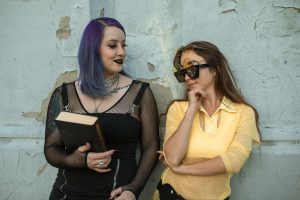
Jen has developed some strategies for managing her fatigue and brain fog a little better, but it still has a significant impact on her life. Her gut problems now feel under control, and her incontinence has improved somewhat. Her cough is also less evident, but she still experiences a coughing fit at least once a week, always accompanied by urinary incontinence. Jen still needs to nap most days and no longer does most domestic chores at home. Jen has worked hard to be more forgiving of herself and feels that she now needs to accept that she is no longer quite the girl she was before COVID-19. Her mindset swings between making the most of what she can do and profound frustration with all the things she cannot do.
Jen keeps abreast of developments in the field of Long COVID, primarily through online peer support groups run by other people with this syndrome. However, she finds these groups very stressful because many members are older than her, and they focus almost completely on the negatives of their situations. Thi still visits monthly and is accommodating and supportive, but Jen sometimes finds her extroverted and chatty friend exhausting. Recently, she has begun to wonder if it would be worth revisiting a GP and seeking a referral to a specialist.
“I just want to feel my age … maybe now they’ve had time to sort out how to treat it”.
Life Roles
Jen feels she has struggled with maintaining her life roles, and her participation in most of them has changed considerably.
| Role | Before COVID-19 | Currently |
| Student | Full-time university student, completing a Bachelor of Design course primarily on campus. | She is a full-time student but now completes most of her classes online. She barely passes and is considering reducing her load for the next Trimester. |
| Home Maintainer | Took responsibility for all household tasks, including housework, dishes, cooking, laundry, and maintaining the veggie garden and pot plants. Jo assisted as and when his back pain allowed. | Jo is now responsible for all these tasks; however, he is not always able to complete them. Jen helps when she can, but her ability varies daily. |
| Worker | A casual employee at a hospital job (approximately 24 hours a week) and a convention centre (approximately 16 hours per week). | No longer working at the convention centre. Picks up extra shifts at the hospital, when possible, where she is now working 24-32 hours a week). |
| Friend | Regular phone contact with two old friends (Ruby and Thi) from Melbourne. Thi also visited her in Geelong every couple of months. Limited contact with other friends, most of which is online via social media. | Social engagement has reduced since being with Jo, as she spent more time at home with him, and they would rarely go to community events together. There have been few opportunities to make new friends in Geelong, and the opportunity to do this at university has been curtailed due to Long COVID symptoms. Jen often feels isolated and lonely. |
| Family Member (child, partner, parent or other relation)
|
Partner, daughter, sister, sister-in-law and aunty. Jen belongs to a close and supportive family, who are frequently in contact. | Jen’s family remains her primary source of support, consistently validating her symptoms and offering as much help as possible. They are increasingly worried about her health and well-being. |
| Neighbour | Acquainted with one neighbour (Jeremy) who lives with his elderly mother (Betty) and their dog (Tiny) next door. Jen spoke with him socially several times a month when their paths crossed while dog walking. Jen and Jo don’t know their other neighbours. | Jen hasn’t seen Jeremy since she caught COVID-19, as she has not been walking Miro. A bunch of flowers subsequently appeared on their doorstep, with a note saying he and Ethel were thinking of her and would come dog walking with her if that would help. |
Activities of Daily Living
Miro. Photo by Migs Reyes from Pexels. / Hospital Food. BrokenSphere,CC BY-SA 4.0 via Wikimedia Commons / University Lecture Hall. Photo by Pixabay from Pexels.
Jen’s participation in daily life has also diminished since her COVID-19 infection, and she feels she is living a ‘lesser life’ now.
| Activity | Before COVID-19 | Currently |
| Showing / Bathing
|
Independent. The townhouse has a shower only. | Able to complete independently, the task takes longer, and Jen often needs a short rest afterwards. Keeping her hands and arms up when washing her hair is particularly tiring. |
| Toileting | Independent and fully continent. | More frequent and longer toileting for both urine and bowel motions. Has maintained bowel continence but still experiences periodic stress incontinence when coughing. Also troubled by frequent bouts of incontinence and cramps, which do not appear to be related to diet. |
| Dressing | Independent. Interested in fashion and makes an effort to be well-dressed daily. | Able to complete independently, but no longer motivated to be fashionable. Minimal effort is expended on clothing, and she often wears baggy leisure garments. Her weight gain means many of her fashionable clothes no longer fit her. |
| Eating | Independent. Vegetarian and eating a good selection of fresh, non-processed food. | Able to complete independently, but diet is no longer as balanced or healthy. Often resorts to ready meals or simple food (i.e., toast) as she does not have the energy to cook. Inconsistent mealtimes, primarily consisting of snacking around naps, work and study. |
| Walking / Moving around
|
Independent and able to mobilise for as long as she wished. | Reduced exercise tolerance and comfortably managing short (10-15 minute) walks. She is far more sedentary in her daily life, as she often stays in bed or sits on the couch most of her time at home. No longer attending the university campus regularly or delivering meals to the wards at the hospital. |
| Personal Hygiene / Grooming
|
Independent and maintained to a high standard. Hair was washed and styled daily. Mouth hygiene was completed, and make-up was applied daily. | Less frequently hair washing and brushing and keeps her hair in plaits for days at a time. Brushes her teeth every second day and rarely wears make-up. Shaving is particularly difficult as she finds bending and reaching particularly tiring. |
| Sexual Activity / Intimate Relationships
|
In a loving relationship with Jo, including regular intimacy. | Reports her libido is reduced and less consistent. Feels a lack of connection with Jo at times, particularly when they are both struggling with their health and well-being. Jen and Jo both feel their relationship has been ‘cooler’ since Jen got COVID-19, but they remain committed to each other. |
| Caring for others | Carer for Jo during his bouts of depression and chronic back pain. Regularly babysits her nieces and nephew (Stella, Augie, Neve) in Melbourne and Geelong. Occasionally supports her father (Robert) as he begins to age. | Reduced capacity for caring responsibilities due to both fatigue and brain fog. Jo has taken on many caring tasks for her, supplemented by her brother Sam. She worries that she could place the children in danger as she isn’t alert enough. Jen particularly values caring tasks and feels her loss of ability in this area very keenly. |
| Pet / Animal Care | Walked Miro for up to an hour every day and twice a day if the weather was pleasant. | Limited to short walks with Miro and cannot do this on some days. Jo now undertakes most feeding duties, and grooming has lapsed. |
| Communication with others | Independent. Able to communicate with a wide range of people in diverse circumstances. | She has difficulty clearly communicating her thoughts and providing clear and relevant responses. Due to her brain fog, she finds spoken communication overwhelming at times and doesn’t remember everything she has been told. Jen now prefers online / written communication because it gives her more time to compose her thoughts, and she can refer to what people have said. |
| Driving / Public Transport | Able to drive but doesn’t own a car. Independent and frequent user of public transport. | Reduced focus and concentration led to a lack of self-confidence in driving, which she now avoids (particularly at nighttime). This makes her dependent on Jo for any trip which can’t be completed by public transport. Able to take trains and buses but feels anxious about being in a closed space with many people due to the risk of re-infection. She is also increasingly finding it difficult to afford the fares. |
| Money management / Budgeting | Jen and Jo combined their income for bills and utilities while maintaining separate bank accounts. Jen prided herself on being good with money and was able to live within her limited means. | Jens reduced working hours have resulted in the couple budgeting more strictly. They are unable to participate in some of the activities they previously enjoyed. While they are under mortgage and bill stress, they are not in arrears or in danger of legal action. Jen worries about the future, however, particularly as the cost of living rises. |
| Home Maintenance | Jo undertook most maintenance activities. However, Jen could also independently complete simple repair and maintenance jobs when required. | Jen finds the simple jobs she previously took care of (I.e., lawn mowing and minor repairs) very taxing and tiring. With Jo’s own health problems, these tasks are not being completed regularly. Both find it particularly hard to participate when the weather is cold or wet. |
| Meal Preparation | Independent and shared tasks with Jo. | Jen feels horrible about her current performance of this task. She can prepare relatively simple meals but leaves the clearing up to Jo (who is not always able to do it). She has tried to prepare more complex meals she previously enjoyed, but her attempts have not been successful. |
| Shopping | Jen and Jo shared these tasks and were able to perform them independently.
|
She often shops online and purchases smaller orders as she cannot plan a full weekly menu. Convenience and food prices dictate purchases, leading to an increase in processed and ‘ready’ meals. Neither Jen nor Jo has a discretionary budget for non-essential shopping. |
| Taking care of health | Independent. | Jen had disengaged from her GP due to dissatisfaction with their management of her Long COVID. She has not seen other health providers, primarily because she cannot afford their fees. |
| Rest/Sleep | Regular sleep schedule and no issues with insomnia or other sleep problems. | Jen’s sleep requirements and her need to rest and take short breaks during the day have increased dramatically. However, her sleep feels less restful, and she often wakes up tired. Jen finds it very difficult to wake up and cannot be easily roused by environmental noises. For example, she won’t fully wake even when Miro barks loudly on her bed. |
| Education | Motivated and well-engaged student. | Jen is finding it increasingly difficult to follow instructions with multiple steps. It also seems more time-consuming to understand new ideas, and Jen often struggles to summarise new information. She must return to readings multiple times, as her attention often wanders from what is in front of her. |
| Work (Paid or Voluntary) | Casual jobs as a food services assistant and waitress. Reliable and valued employee.
|
She no longer works as a waitress but has retained food services job. Jen avoids social conversations at breaks in preference to spending time alone to ‘recharge’. She needs more breaks and is not working at her usual speed. Supportive hospital employers and colleagues who are familiar with Long COVID. |
| Play / Leisure | Favourite hobbies were gardening, crafting and sewing. Jen was considering returning to her childhood sport of tennis to meet more people locally. Jen was also an avid reader of fantasy fiction. | Jen has given up on her goal of playing tennis. She pushes herself to do light gardening several times a week but is becoming discouraged by how neglected her garden now looks. Jen hasn’t been crafting or sewing, as she runs out of energy to pack away her equipment and materials, contributing to messiness and clutter at home. |
| Friendships | Regular phone contact with two old friends. Occasional face-to-face contact with one of these friends, but most social connections are online. | She no longer speaks to Ruby by phone, as Jen felt she was not empathetic to her struggles. Thi still calls and visits and has been trying to support Jen to increase her activities slowly. Online communication is now Jen’s preferred format, but she is more selective in who she contacts. |
“It’s so weird having people help me with stuff. I’m not too proud to ask for help …. but I should be the one looking after others.”
Jen’s Goals (in no particular order)
- To get over my fatigue and demotivation, so I can do the household activities I used to do
- To no longer have toilet problems
- To improve my performance at university
- To pick up more hours at the hospital or by taking on a new job
- To get out and about more in my local community
“I’m young; I was fit, so I think I can get better. But I need help from people who really get Long COVID.”
What does the evidence say?
There is a general perception that Long COVID predominantly affects middle-aged people, and research into its impact on younger adults is not extensive.
Young people with Long COVID may not be receiving the care they need.
- Walsh-Messinger et al. [1] found around a third of tertiary students with Long COVID in the United States had no contact with healthcare providers despite experiencing significant symptoms. They suggest that student health services should closely monitor the recovery of all young people following COVID-19 infection. However, colleges and universities are yet to develop resources and support for students with Long COVID [2], and knowledge of the syndrome among health professions remains variable [3].
- While young people are more likely to experience mild symptoms during their COVID-19 infection, evidence shows this can still lead to persistent cognitive and mental health deficits [4]. There are immense barriers to accessing youth mental health services for many young Australians, with around half of this group not receiving the care their need [5].
Less common symptoms
- People whose symptoms profile differs from the ‘classic’ post-viral picture of brain fog and fatigue may struggle to access Long COVID specific clinics, which are generally led by respiratory or neurology specialists.
- Abdominal pain and diarrhea are reported by approximately 14% and 10% of people recovering from COVID respectively [6]. The virus is known to disrupt gut microbiota, leading some to propose using pre or pro-biotics as part of Long COVID treatment [7]. However, the roles of gastroenterology and nutrition/dietetics in managing Long COVID remain in their infancy.
- Issues with bladder control are reported by up to 14% of people recovering from Long COVID [8] and can affect people of any age. COVID19 associated cystitis (presenting as overactive bladder) is also been reported [9], although the current evidence focuses on middle age or older people.
- Decreased libido is associated with one of the highest adjusted hazard ratios (2.36) in long COVID [10], although none of the existing studies focuses specifically on female sexuality.
Impact of Long COVID on education and training activities
- While young adults are not often the target sample of Long COVID studies, findings from some studies indicate they may experience increased depression and disinhibition [11], balance problems [12], and reduced [13].
- However, a study from Sweden [14] indicates that university students with a history of COVID-19 infection do not experience any significant cognitive problems when completing neurocognitive tests in comparison to their non-infected peers. There is also some evidence that autonomic function and physical activities do return to baseline over time for this cohort of patients [15].
References
- Walsh-Messinger, J., Manis, H., Vrabec, A., Sizemore, J., Bishof, K., Debidda, M., Malaspina, D., & Greenspan, N. (2021). The kids are not alright: A preliminary report of Post-COVID syndrome in university students. Journal of American College Health, Online First. doi: 10.1080/07448481.2021.1927053. ↵
- Vance, L., & Aquino, K. (2023). Dealing with the impact of Long COVID on college campuses. Disability Compliance in Higher Education, 28(7), 6-7. ↵
- Baz, S., Fang, C., Carpentieri, J., & Sheard, L. (2023). 'I don't know what to do or where to go'. Experiences of accessing healthcare support from the perspectives of people living with Long COVID and healthcare professionals: A qualitative study in Bradford, UK. Health Expectations, 26(1), 542-554. doi: 10.1111/hex.13687. ↵
- Manukyan, P., Deviaterikova, A., Velichkovsky, B., & Kasatkin, V. (2022). The impact of mild COVID-19 on executive functioning and mental health outcomes in young adults. Healthcare, 10, 1891. doi: 10.3390/healthcare10101891. ↵
- Savaglio, M., O’Donnell, R., Hatzikiriakidis, K., Vicary, D., & Skouteris, H. (2022). The Impact of Community Mental Health Programs for Australian Youth: A Systematic Review. Clinical Child & Family Psychology Review, 25(3), 573–590. doi: 10.1007/s10567-022-00384-6 ↵
- Choudhury, A., Tariq, R., Jena, A., Vesely, E. K., Singh, S., Khanna, S., & Sharma, V. (2022). Gastrointestinal manifestations of long COVID: A systematic review and meta-analysis. Therapeutic Advances in Gastroenterology, 15, 17562848221118403. doi: 10.1177/17562848221118403 ↵
- Alharbi, K. S., Singh, Y., Hassan almalki, W., Rawat, S., Afzal, O., Alfawaz Altamimi, A. S., Kazmi, I., Al-Abbasi, F. A., Alzarea, S. I., Singh, S. K., Bhatt, S., Chellappan, D. K., Dua, K., & Gupta, G. (2022). Gut Microbiota Disruption in COVID-19 or Post-COVID Illness Association with severity biomarkers: A Possible Role of Pre / Pro-biotics in manipulating microflora. Chemico-Biological Interactions, 358. https://doi.org/10.1016/j.cbi.2022.109898 ↵
- Davis, H., Assaf, G., McCorkell, L., Wei, H., Low, R., Re’em, Y….. & Akrami, A. (2021). Characterizing long COVID in an international cohort: 7 months of symptoms and their impact. eClinical Medicine, 38, 101019. Doi:10.1016/j.eclinm.2021.101019. ↵
- Lamb, L. E., Timar, R., Wills, M., Sorabh, D., Lucas, S. M., Dragana, K., . . . Nivedita, D. (2022). Long COVID and COVID-19-associated cystitis (CAC). International Urology and Nephrology, 54(1), 17-21. doi: 10.1007/s11255-021-03030-2 ↵
- Subramanian, A., Nirantharakumar, K., Hughes, S. et al. (2022).Symptoms and risk factors for long COVID in non-hospitalized adults. Nature Medicine, 28, 1706–1714. doi: 10.1038/s41591-022-01909-w ↵
- Manukyan, P., Deviaterikova, A., Velichkovsky, B. B., & Kasatkin, V. (2022). The Impact of Mild COVID-19 on Executive Functioning and Mental Health Outcomes in Young Adults. Healthcare (2227-9032), 10(10), N.PAG. doi:10.3390/healthcare10101891 ↵
- Guzik, A., Wolan-Nieroda, A., Kochman, M., Perenc, L., & Drużbicki, M. (2022). Impact of mild COVID-19 on balance function in young adults, a prospective observational study. Scientific Reports, 12(1):1-8. doi:10.1038/s41598-022-16397-8 ↵
- Walsh-Messinger, J., Manis, H., Vrabec, A., Sizemore, J., Bishof, K., Debidda, M., Malaspina, D., & Greenspan, N. (2021). The kids are not alright: A preliminary report of Post-COVID syndrome in university students. Journal of American College Health, Online First. doi: 10.1080/07448481.2021.1927053. ↵
- Francis, G., & Thunell, E. (2023). COVID-19 infection does not seem to affect cognition in college students. Consciousness and Cognition, 108, 103464. Doi: 10.1016/j.concog.2023.103464. ↵
- Freire, A. P. C. F., Amin, S., Lira, F. S., Morano, A. E. von A., Pereira, T., Coelho-E-Silva, M.-J., Caseiro, A., Christofaro, D. G. D., Dos Santos, V. R., Júnior, O. M., Pinho, R. A., & Silva, B. S. de A. (2023). Autonomic Function Recovery and Physical Activity Levels in Post-COVID-19 Young Adults after Immunization: An Observational Follow-Up Case-Control Study. International Journal of Environmental Research & Public Health, 20(3), 2251. https://doi.org/10.3390/ijerph20032251. ↵

